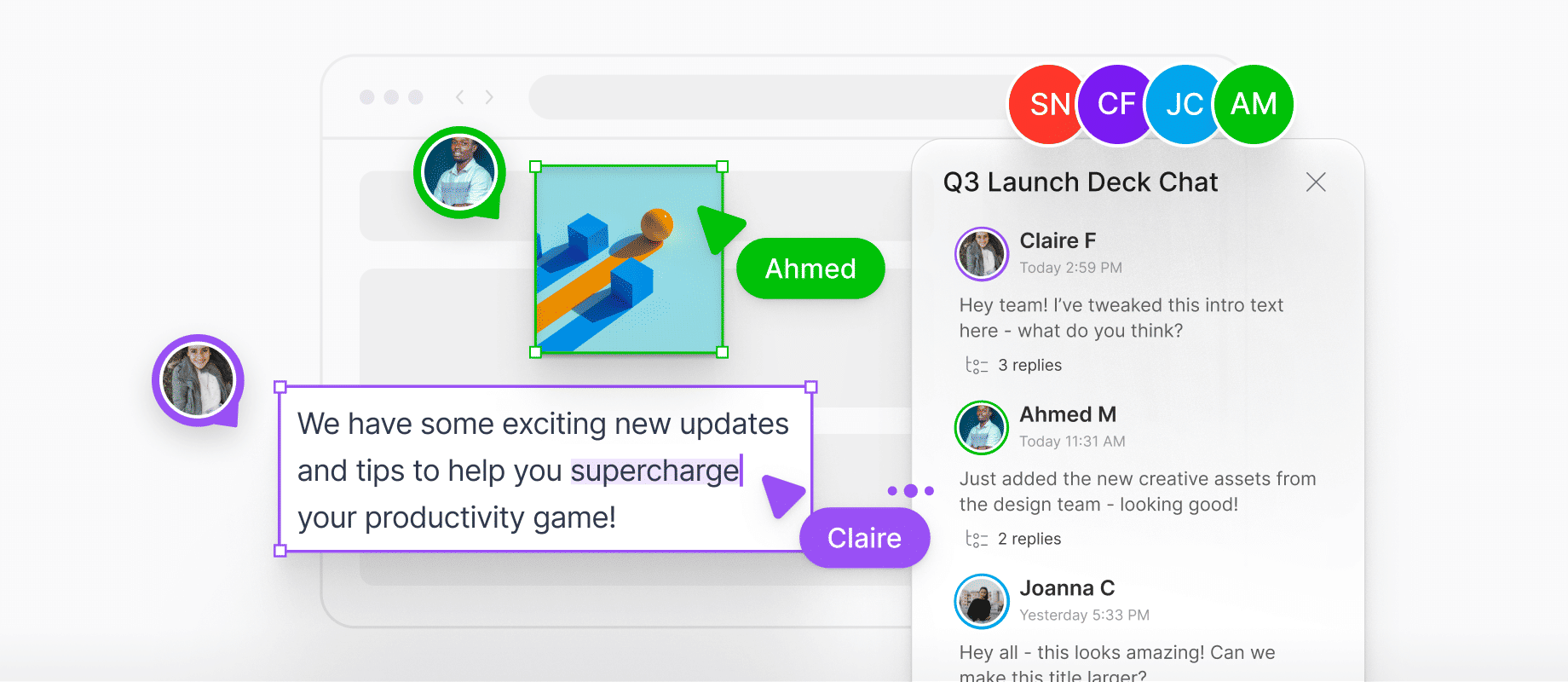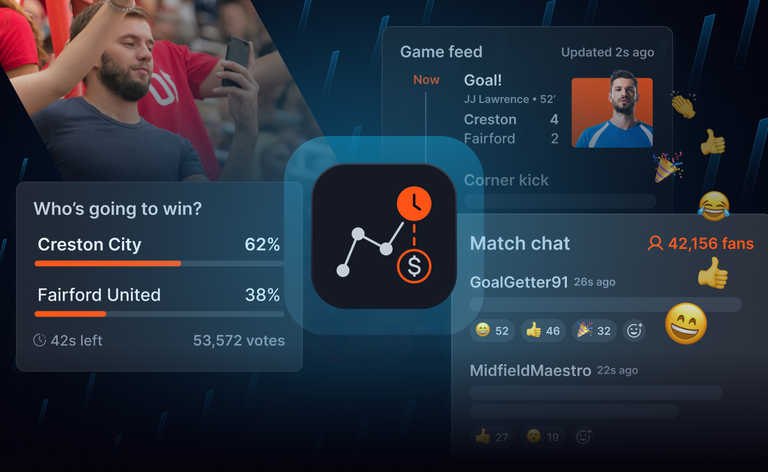Failure is the norm. Out of the thousands of consumer products launched each year, 80% fail. For tech start-ups, the situation is marginally more favorable but, even so, only one in ten succeed.
The companies that make it all have one thing in common: a focus on product adoption. From launch through to maturity, ensuring that people are signing-up for and using your product is an almost perfect proxy for product-market fit. That proof can then lead to the investment and revenue that will help yours to be one of the handful that succeed.
Here we’ll look at what you can do to drive product adoption, the factors that impact adoption rates, and the metrics you’ll need to measure success.
What do we mean by product adoption?
Let’s start by defining what we mean by product adoption. The Interaction Design Foundation puts it this way:
“Adoption is the process by which people become users of a product, and it is adoption which will enable users to discover that a product is usable and useful and enable them to become long-term users of a product.”
In other words, the moment where someone decides to use a product is just one part of a bigger journey. That journey begins with someone recognizing that they have a need and it continues to take in the full customer lifecycle. For product owners, product adoption is an ongoing process of winning new users and then retaining their loyalty.
Let’s look at how that works.
What is the product adoption process?
There are distinct phases to how people think about and engage with a new product. And, in most cases, the same goes for new features, too.

One way of modeling those phases is as a product adoption journey with distinct stages, such as:
- Awareness: The prospective user knows that they have a problem and learns that your product exists.
- Interest: They start to believe that your product might help solve their problem and they are ready to find out more.
- Evaluation and trial: They compare your product to competing offerings, both through desk research and by running proof of concept trial projects.
- Adoption: This is not the end but the beginning. If the evaluation goes well, the person becomes a user and/or customer.
- Ongoing reevaluation: Depending on your product or feature, there could be a high cost to switching to an alternative. However, churn remains a real threat. Your competitors will attempt to win your users and, of course, your users will look to see if there are better options.
Understanding those stages can help you to prepare your communication, your user experience, and your customer service accordingly.
There is another model that zooms out from individual customer journeys and, instead, groups people together by how likely they are to adopt new products and features. Known as the Product Adoption Curve, it’s a useful way to think about the type of effort you need to make on the product side in order to win different types of people, including:
1. Innovators: Those who are first to adopt a new product or feature. They’re happier to try something that’s riskier, such as a beta version or a product they haven’t heard about before. They tend to become expert in products quickly and to influence others.
2. Early Adopters: Less open to risk but nonetheless this group enjoys being seen as trailblazers. They’re often opinion leaders and influencers within their social or business circles. Their adoption of a product can be a signal to others that it is worth trying.
At this point is the chasm. Innovators and Early Adopters are usually happy to tolerate some rough edges in exchange for being first to try something new. Most people, though, want products to just work. Crossing the chasm–in other words, achieving product-market fit and polish that is good enough for most users–is key to sustainable product adoption.
3. Early Majority: The largest group, these people adopt products when they first go mainstream. They are typically more risk-averse than early adopters but are still open to trying new things.
4. Late Majority: Skeptical of new products, and perhaps even resistant to change, this group adopts new products only once they’re widely and recognizably in use by other people. They want proven solutions.
5. Laggards: Finally, this group is hard to win over to a new product. If they adopt it at all, they’ll be the last group to do so.
Whichever model you use to understand the product adoption process, how can you measure your product’s adoption progress?
What metrics can be used to measure product adoption?
The headline metric for product adoption is adoption rate. How you measure that will depend on what makes the most sense for your go-to-market strategy. Here are some of the options:
- Percentage of total addressable market: If you have a reliable estimate of the total possible number of users for your product, you might measure your product adoption rate by calculating your active users as a percentage of that total addressable market.
- Percentage of overall users: An easier way to track your product adoption rate is to look at what proportion of your overall user base is made up of new users within a particular time period, such as the past month. Over time, changes in that number can help you to understand the impact of adjustments you make to your onboarding process, broader user experience, and other factors such as pricing.
- Percentage of registered users who become retained users: This measure is particularly useful if you’ve had previous issues with conversion.
But that’s just the start. Getting a deeper picture of what feeds into that product adoption number requires looking at supporting metrics, such as:
- Product awareness: Metrics such as social media engagement, search volume, and share of voice indicate how well your product is penetrating with its target audience.
- Sign-up rate: How many people each day, week, or month are creating new accounts.
- Activation rate: How many of those newly registered users become active.
- Time to first value: How long it takes from someone to go from sign-up to benefiting from what the product offers.
- Daily active and monthly active users: The number of people who make meaningful use of the product.
- Utilization rate: Another way of viewing active users, this is the number of them as a percentage of the total user base.
Let’s look at four ways to move the needle on those numbers and, in turn, boost your product adoption rate.
5 ways to drive product adoption
If product adoption goes beyond driving sign-ups, then boosting your product’s adoption rate is a matter of:
- Awareness: Making sure your target audience knows about your product and is interested in trying it.
- Acquisition: Getting those people to sign-up and helping them realize your product’s value quickly.
- Retention: Providing ongoing reasons for them to stay.
- Expansion: Helping users find greater value by cross-selling and up-selling additional functionality to drive more revenue.
Success in each of those depends both on your marketing communications and on the product itself. For many teams, it is the product that is the focus of all efforts to drive awareness, acquisition, retention, and expansion.
Known now as product-led growth, this is a strategy that says success comes from building a product that meets user needs so well that they have no reason to churn. Instead, they like it so much that they champion it to their peers.
Whether it’s for a new product or new features in an existing product, here are five ways that you can boost your product adoption rate through both traditional marketing and product-led growth.
1. Get the launch right
Whether it’s for a completely new product or a new feature, you usually get just one opportunity to launch. You can take advantage of people’s interest and excitement in new things by making sure you’re as well prepared for launch as possible.
There are three stages to your launch:
Pre-launch
This is where you make sure you understand your product or feature in relation to the:
- Target market: By creating user personas that describes who they are, where they hang out, their pain points, and how your product or feature aligns with those needs.
- Total addressable market (TAM): This is the theoretical maximum market you could serve, limited by factors such as competitor activity and your budget. From here, you can also review your serviceable available market (SAM) and serviceable obtainable market (SOM) to help you focus your resources and set realistic targets.
- Competitive environment: How your product or feature matches up to what is already available.
- Goals for launch, such as the number of sign-ups within the first week and the conversion rate into active users.
Once you have that straight, you can create a launch plan that speaks to your target market’s needs and preferences in channels where you are most likely to find them.
One common tactic is to create a sense of scarcity by limiting availability and providing a waitlist for those people unlucky enough to get an account in the first wave.
Launch day
Put your plans into action! On top of the usual mail-outs, press releases, and social media activity, many teams announce their launch through sites such as Product Hunt. That can help with discoverability and it provides a rallying point for friendly people to upvote and share your launch, thereby driving awareness and interest.
Post-launch
Build on the success of your launch by engaging directly with your newly acquired users. There are two elements to this. First is ensuring that your new users are successful with your product, whether that’s by offering responsive support options or running a customer success program that pre-empts potential stumbling blocks and engages with users to help them get the most from the product. The other is by getting a deeper understanding of real user journeys to help you improve and optimize processes going forward. User research interviews can be a helpful tactic here.
2. Curate "Aha!" moments
Product adoption relies on converting signed-up users into ongoing active users. To get there, people need to be able to quickly and easily see how your product adds value. You can reduce the time to first value by:
- Reducing sign-up requirements: Ask for only minimal information during sign-up, so as to avoid user fatigue. Research by analytics platform Heap suggests that the average conversion rate at this stage is just 36.2% for SaaS products. Almost two thirds of people never make it past sign-up, so the more you can do here to reduce friction, the better.
- Hand-holding during onboarding: Following sign-up, you need to take new users straight into an onboarding flow that orients them with your product and puts them on the path to first value. In-app messages, in the form of an assistant or a first-use tour, are a great way to lead your users through what’s called the “suck threshold”. That’s the barrier between someone feeling that they don’t understand your product to achieving that all important moment of first value.
- Creating deliberate “Aha!” moments: Be intentional in creating moments where the user feels a sense of excitement and achievement. “Aha!” moments are those times where a person gains a sudden and visceral understanding of why your product matters.
3. Stimulate engagement through multiplayer experiences
Collaboration is proven to drive product engagement. Tools such as Figma, Miro, and Asana show that enabling people to work together in realtime is so compelling that it can help newcomers to topple market leaders. But what is it about realtime collaboration that helps to drive product adoption?
- Faster feedback loops: Working together in realtime reduces the wait between one iteration and the next. Instead of waiting for feedback, people can communicate in realtime in a shared workspace.
- Centers your product: Enabling people to work together in the same space, without the need to switch contexts into messaging tools, for example, makes your product central to your users’ workflows. That helps your users to make a habit out of using your product.
- Recreates in-person collaboration: People are naturally collaborative. Working together in person sparks creativity but that is hard to replicate when each person works asynchronously and in their own silos. Multiplayer recreates the immediacy of in-person collaboration, helping boost the potential for spontaneous creativity.
Although converting a product to become fully multiplayer can seem daunting, you can take steps to introduce collaborative features, such as:
- Live typing: Remind each user that they’re working in realtime with other people by showing what each person is typing as they type it. That turns an otherwise static experience into a live conversation.
- User avatars: Similarly, you can help users feel a sense of being part of something bigger by placing each person’s profile picture next to what they’re currently working on. That elevates the other users from pixels on a screen to real people.
- In-app chat: Keep the focus on your app by connecting users through direct messaging and group chat within your product so that they can converse without context switching to another tool.

4. Build-in virality
Make it easy for your users to become product champions by making viral functionality a key part of the user experience. That could be as simple as providing links to share something with external social media networks or making a product recommendation to a friend through messaging apps, such as WhatsApp.
To take it a step further, build an activity feed into your product that enables users to share and collaborate with one another.
5. Support your users
Even the best user experience can have rough edges and moments where the learning curve might be just a bit too steep for some new users. For iOS apps, only a quarter of people retain a newly installed app for more than a day. That slips to 4.13% at the 30 day mark. Boost your user retention in those dangerous early days by actively offering support. That could be in the form of handholding, automatic messages in the user interface or by providing in-app chat that links users directly to customer support agents.
Analytics tools for measuring product adoption
Having a plan for increasing product adoption is only useful if you can measure its effectiveness. Here are some of the analytics tools you might find useful for doing just that.
- PostHog: An open source suite of tools that helps you to measure user sign-ups, conversion rates, retention, and more.
- Mixpanel: Analytics that help prove the effectiveness, or otherwise, of new features.
- LogRocket: Play back user sessions so you can see how people engage with your product and where they get stuck.
Tools to support product adoption growth
Just as you’ll need tools to track your progress, there is also a wealth of tooling designed to help you implement some of the ways that you can drive product adoption.
Here are four tools that can help you reach, convert, and delight more users.
- Hubspot: Through its marketing automation tooling, Hubspot can help you manage communication with people who are interested in your product. In the pre-launch phase, potential users can opt-in to hear more from you then later can use that to announce your launch and also to stay in touch over time.
- Split: It’s not always clear what product changes will drive adoption. You can experiment by making new features and other changes available only to limited parts of your user base. Split is a tool that helps you to do just that, by delivering the experimental feature to some users while others continue to see the standard version.
- ChurnZero: Production adoption is as much about retaining users as it is winning new people. ChurnZero offers a suite of tools to improve your communication with and understanding of your product’s users. For example, its customer health score can help you see which users are likely to churn before they leave, giving you the opportunity to learn what’s wrong and to address it.
- Ably: Multiplayer, collaborative experiences can boost long-term product adoption. Spaces gives you the infrastructure to build collaborative realtime features, including avatar stacks, typing indicators, live chat, and shared workspaces, without the upfront engineering or ongoing maintenance costs of developing in-house.
Customers including Webflow, Mentimeter, and MobyMax have built reliable multiplayer products that serve global audiences on top of Ably’s realtime infrastructure. Visit our Spaces product page to learn more about how you can add collaborative experiences with Ably.





